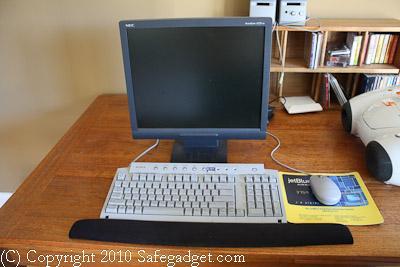
Online banking and online trading have been gaining market share every year. Security breaches make headlines almost daily. With more and more people going online, consumers are worried more than ever about keeping their online banking and online trading safe and secure. In this article, we will help you bank and trade more securely.
Secure your computer, web browser, Internet connection
Follow our guides to secure your Windows PC or secure your Macintosh by installing the right software, firewall, antivirus software, etc. Secure your mobile devices: iPhone, Android smartphone or tablet, iPad. Configure the settings and add plug-ins to you web browser so that it is more secure. Consult our tutorials for: Internet Explorer 9, Google Chrome, and Mozilla Firefox. Secure your Internet Connection: Wireless Network, Public Wi-Fi.
1. Configure your wireless router for optimal security. Consult our article How to set up a secure wireless router for details. For maximum security, do your online banking and online trading when connected by a hardwired connection such as Ethernet.
2. Ensure that your operating system is set up securely. Consult our computer security guides for Windows and Macintosh. For maximum security, you could start off a Linux boot CD or USB key.
3. Secure your Internet browser. Consult our security guides to Internet Explorer, Google Chrome, and Google Chrome.
4. Make sure you are accessing the online banking or trading website is using a secure connection, look for https:// in the browser’s address bar and a padlock icon

5. When creating an account at the online bank or brokerage, we recommend you use a unique password as it is far safer in case the website gets hacked. You would not want hackers to get a password that worked on other websites. Consult our How to create, store and use secure passwords article for suggestions.
6. Sign up for alerts from your bank or brokerage by email or text message. This will allow you to respond to any fraud rapidly. Also carefully check each month’s statement for erroneous or fraudulent transactions. Consider checking your outstanding transactions every couple of weeks via the company’s website.
7. Two factor authentication is available from many banks and brokerage houses. Bank of America, Citi, Schwab, Fidelity Investments, and several other companies have this available, so check with your representative. This technique forces the use of both a password and a number generated by the hardware security token, to be needed in order to log in. Clearly if criminals got a hold of your password, they would not be able to login.
8. To avoid falling victim to e-mail phishing, never click a link or open an attachment from an e-mail. This is especially true for online banks and online brokerages. Manually type the URL into your browser.
9.Internet Explorer Virtual Machine – Designed for web developers to test compatibility with different versions of Internet Explorer, these Virtual Machines for Microsoft’s Virtual PC allow you to run a Virtual computer on your desktop with Internet Explorer pre-installed. If you mess up the Virtual computer, you can just delete it and start fresh from a new image. You can perform your online banking and trading within the virtual machine to increase security.
10. When banking or trading on a smartphone or tablet, using the built in 3G/4G connection is a lot safer than connecting via a local wireless internet hotspot. This warning applies to both apps and mobile internet browsers.
11. Explicitly logout after you are finished. Do not just close the browser. This helps terminate your session officially.
Things Not To Do
1. Do not bank or trade when using public wifi hot spots or when using a shared computer in a cyber cafe. Many of these locations provide little to no security and are prone to snooping or malware. This warning also includes smartphones and tablets connected to public wireless internet.
